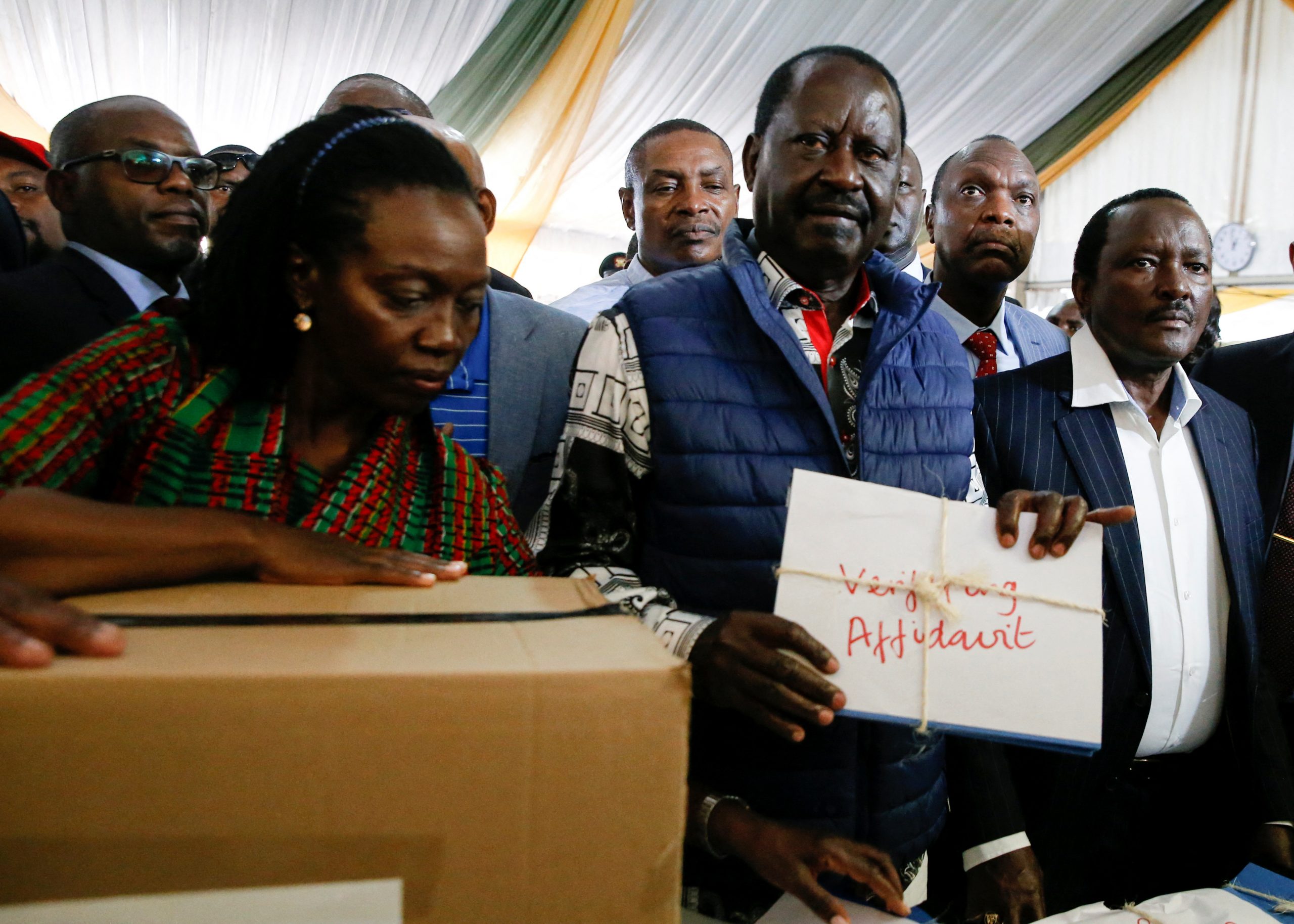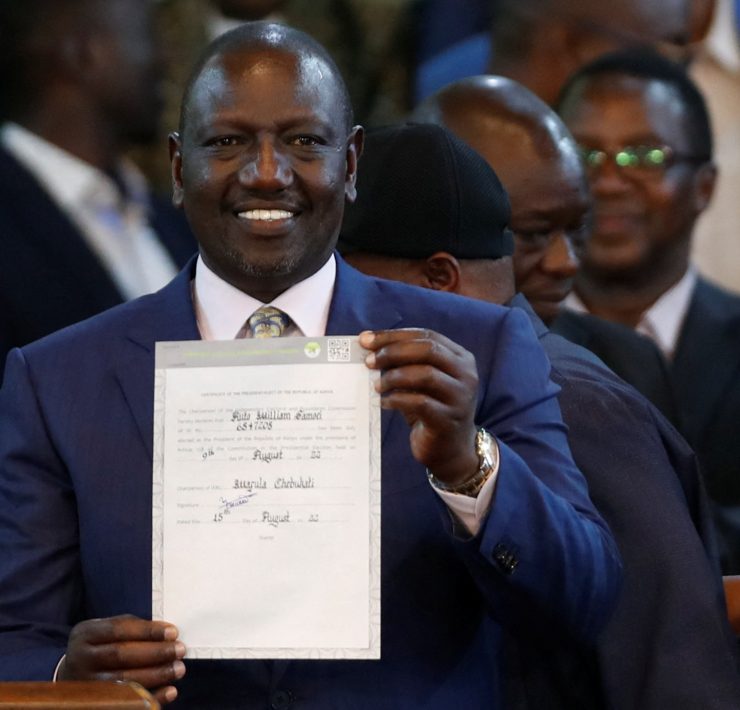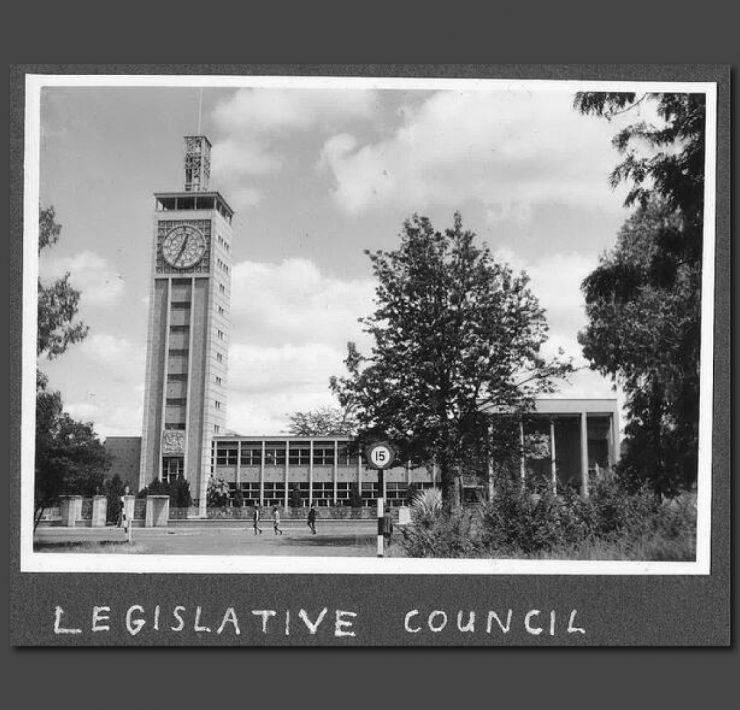By 2 p.m. on 22 August 2022 – being the final day and hour when filings to the Supreme Court would be made against the declaration of William Ruto as president-elect – nine petitions had been submitted, with the requisite fee of KSh 1 million paid.
Of the nine petitions, the filing by Raila Odinga and Martha Karua, the duo which had hoped to be declared president and deputy president elect was most dramatic, coming complete with a lorry full of evidence and chanting crowds. Then the various affidavits started doing the rounds online – accusations and counter accusations – and everyone knew the Supreme Court had its work cut out for it.
But let’s talk timelines, starting with the last one week, and the next one week.
23 August 2022: Serving Respondents
According to The Supreme Court (Presidential Election Petition) Rules, 2017, within two days of filing, the petitioners were expected to serve the respondents. This meant that after filing on August 22, the petitioners would have had until August 24 to serve respondents. However, in this year’s timeline, service, which should ordinarily be done either in person or by advertisement in a newspaper with nationwide circulation, was cut down to a maximum of 24 hours, meaning petitioners had only August 23 to serve respondents.
24 to 27 August 2022: Filing and Serving of Responses
After respondents were served, they had four days to make their response known to the court, meaning the final day for replies was August 27. Respondents could either oppose the petition, which meant that they sought to have their day in court, or opt out of the petition. Where respondents did not wish to oppose the petition, they were expected to file a “notice of intention not to oppose the petition” and furnish the petitioners with a copy of the notice.
- Wednesday August 24: IEBC led by Commissioner Molu Boya and CEO Marjan Hussein delivered the election materials required by petitioners. Among the paperwork submitted were copies of all the documents used to declare the presidential results including forms 34A, 34B and 34C.
- Friday August 26 : William Ruto’s advocates led by advocate and Kenya Kwanza chief agent, Prof. Kithure Kindiki filed his response accompanied by affidavits sworn by William Ruto and that of his deputy chief agent Veronica Maina.
- Friday August 26: Raila Odinga and Martha Karua filed fresh written submissions seeking the Supreme Court to disband the Independent Electoral and Boundaries Commission, issue order for procurement of new technological equipment for a repeat election (should the Court not issue an order to recount the tallied votes), declaration of IEBC Chairman Wafula Chebukati unfit to conduct a fresh election and to have costs incurred in the legal proceedings footed by Chebukati in his individual capacity.
- Saturday August 27: Advocate Peter Wanyama and Kamau Karori filed responses on behalf of IEBC Chairman Wafula Chebukati.
- Saturday August 27: Advocate Haggai Okeyo filed responses on behalf of IEBC Commissioner Francis Wanderi.
- Saturday August 27: Advocate Apollo Mboya filed responses on behalf of IEBC Vice-chair Juliana Cherera.
- Saturday August 27: IEBC Commissioner Justus Nyang’aya filed his response.
28 August 2022: Filing of a Rejoinder
Within 24 hours after responses were filed, a rejoinder was to be filed and served by petitioners. A rejoinder is a reply by the petitioner to the counter claims filed by respondents.
- Sunday August 28: Advocates Ochieng Oginga and Ouma George filed a rejoinder on behalf of Raila Odinga and Martha Karua.
- Sunday August 28: IEBC filed its response.
- Sunday August 28: IEBC Commissioner Irene Masit filed her response.
28 August 2022: Filing Third Party Applications
Any person that wished to be enjoined as a respondent to the petition was required to have filed their applications by August 28.
Applications received at the close of pleadings on August 28 included that of:
- Advocate Charles Kanjama on behalf of three Information and Communications Technology (ICT) experts as amicus curiae.
- Law Society of Kenya seeking to be enjoined as amicus curiae.
- Attorney General Kihara Kariuki who sought to oppose the petition filed by former Gatundu South MP Moses Kuria that wanted Raila Odinga’s petition struck and to as well be enjoined, as a friend of the court.
- Agano Party’s David Mwaure Waihiga who wanted to be enjoined as an interested party to testify against the petition filed by Raila Odinga.
28 to 29 August 2022: Filing, Servicing and Responding to Interlocutory Applications
Interlocutory applications, which are written submissions to the Court, were to be filed by August 28 and responses delivered by the Court on August 29. The applications allow parties to the petition to seek relief from the Court on the procedure and preparation of cases or striking out of pleadings made by parties.
30 August 2022: Pre-trial Conference
At the pre-trial conference, the Court shall:
(a) Frame contested and uncontested issues in the petition.
(b) Consider consolidation of petitions in cases where more than one petition is filed.
(c) Give directions specifying the place and time of the hearing of the petition.
(d) Direct the Commission on the handling of all the relevant election materials and documents relating to the petition before commencement of the hearing.
(e) Make orders as may be necessary to ensure a fair determination of the petition.
31 August to 4 September 2022: Hearing of the Petition
Immediately after the pre- trial conference, the hearing of the petition will commence led by the Chief Justice, Martha Koome, at the Milimani Law Courts, which will temporarily host the Supreme Court sittings. The Court was relocated from its premise at the Central Business District to the Milimani Courts as the Court needed ample spacing that met the COVID-19 regulations.
5 September 2022: Delivering Judgement
The Supreme Court has until 5 September, which will mark the fourteenth day from the commencement of the petition process, to deliver its verdict. By law, the Court has the leeway to, at the close of a hearing, give its verdict but may reserve its reasons for the decision to a later date which should not exceed fourteen days from the day of the verdict. In 2017, the Court delivered its summary ruling that nullified the 8 August election on 1 September and its full judgement on 20 September 2017.
At the conclusion of the hearing of an election petition, the Court may make an order:
(a) Dismissing the petition(s)
(b) Declaring the election of the president-elect to be either valid or invalid.
(c) Invalidating the declaration made by IEBC under Article 138(5) of the Constitution.
(d) On payment of costs.
The decision of the Supreme Court, once delivered, is final.



